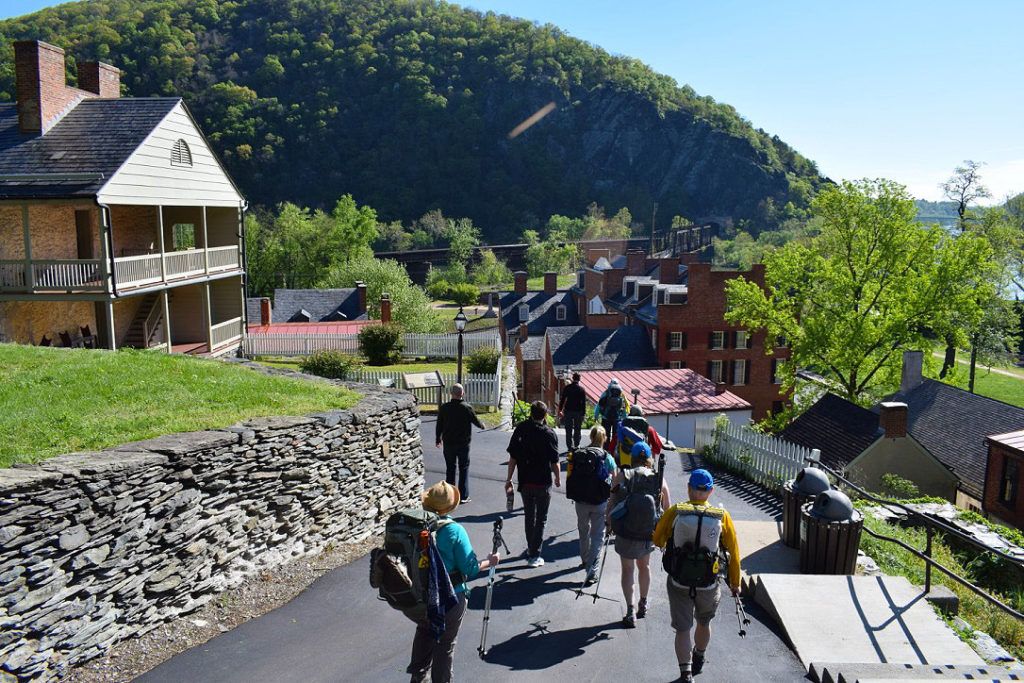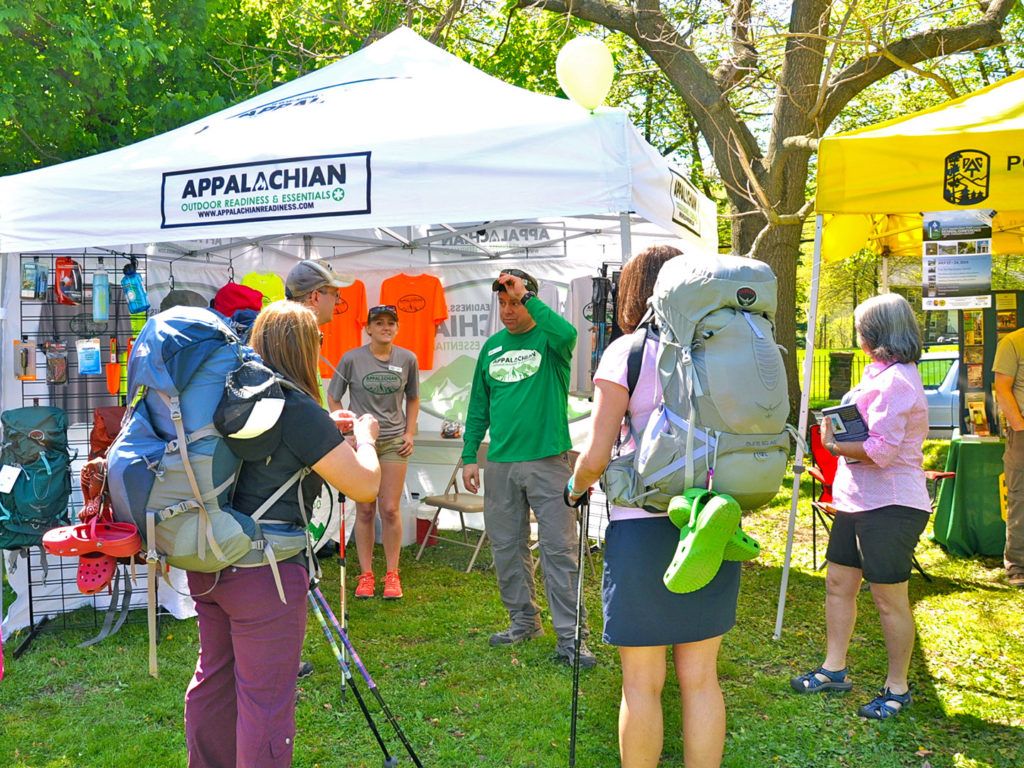by Alyson Browett
Flip Flop Hiking: Helping Conserve the Trail and Sustain Communities
April 21, 2018
Ten days before leaving on their northbound thru-hike of the Appalachian Trail (A.T.) in 2016, Margaret “Bubbles” Campbell and Robert “Sprout” Campbell checked the Appalachian Trail Conservancy’s (ATC) website to see how many other hikers had registered their hikes around their March 28 start date.
“When we looked at the bar graph on the ATC’s website and saw how many people were starting down in Georgia, it really freaked us out,” Bubbles said, “We called ATC and they recommended we do a flip-flop hike, and it was the best choice we made.”
Wait, What’s a Flip-Flop Hike?
Traditionally, most people planning to thru-hike the A.T. – completing the entire Trail in a 12-month period – travel northbound (NOBO) to Maine from the south, beginning either at Amicalola Falls State Park or Springer Mountain in Georgia. Another traditional, although less common, route is to travel southbound (SOBO) from Maine to Georgia.
More and more, hikers are choosing to begin their hikes at various locations along the A.T.’s corridor, hiking north or south, and then “flip-flopping” back to their starting location and hiking the opposite direction to finish the Trail. The options – with names including the Modified Cool Breeze, Leapfrog and Wraparound – are nearly limitless.
In 2017, an estimated 3,840 thru-hikers began their journeys in Georgia traveling north, and nearly 500 began in Maine traveling south. But a record number of hikers – more than 580 – registered with ATC to complete a flip-flop hike. Since ATC began tracking thru-hikers undertaking intentional flip-flop hikes, the number of registrations has almost doubled.

Flip flop thru-hikers often start their journeys at a location other than the northern or southern termini — such as Harpers Ferry, West Virginia (above) — in order to avoid crowds and lessen the overall impact on the A.T.
The Two Cs: Crowds and Conservation
Much has been written about the pros and cons of flip-flop thru-hiking, but hikers most often cite two reasons: avoiding crowds and promoting conservation. And the two are intricately linked.
Bubbles and Sprout knew they wanted more privacy and solitude, so they changed their plans and began at Rockfish Gap in Virginia, hiking north through Shenandoah National Park. “We had done a shakedown hike in the park, so we felt comfortable starting there,” Bubbles said.
“If you’re going into the woods to commune with nature, I think it’s going to be difficult with 100 other people communing around you at the same time,” Charles “Greeter” Land, a 2017 flip-flop thru-hiker, said, adding, I believe if you do a flip-flop hike, you’ll have a richer experience and at the same time you’ll help conserve the Trail.”
“As people are weighing the pros and cons of a flip-flop thru-hike, conservation is being cited more as the deciding factor. And that’s really cool,” Laurie Potteiger, ATC’s information services manager, said.
Sustaining A.T. Communities
In addition to overcrowded shelters, congested privies, and a taxed footpath, the hiker “bubble” also can strain the resources in local communities.
Jeff Taussig, owner of the Green Mountain Hiker Hostel in Manchester, VT, and creator of the A.T. Passport, said the summers in New England can be very busy, causing his and other businesses to have to turn hikers away because they reach maximum capacity.
“But flip-flop hikers reach us earlier in the season, and that’s a great situation as a business owner. When you catch a service provider fresh, we tend to go the extra mile,” Taussig said with a laugh.

The annual Flip Flop Festival celebrates each year’s aspiring thru-hikers and provides educational hiking courses, backpack shakedowns, live music, guided hikes, food and much more for all attendees.
Celebration of Flip-Floppers
Whatever reasons hikers have for choosing a flip-flop hike, the number of people intentionally choosing the option is increasing. However, Potteiger noted, “People need to be prepared for what’s different.” She said some people enjoy traveling with the “bubble” or might be disappointed their hike won’t end atop the epic Katahdin. Others might be energized by having two summits, at Katahdin and Springer.
To help long-distance hikers learn more about and how to prepare for a flip-flop thru-hike, the ATC holds an annual Flip-Flop Festival in Harpers Ferry. This year, the 4th annual festival, being held April 28-29, will feature a “Celebration of Flip-Floppers,” highlighting past flip-floppers, flip-floppers in progress, and this year’s flip-floppers about to begin their journeys. The festival also will feature a Moth-style storytelling event, where Greeter and others will talk about their hikes.
Whether you’re looking to avoid crowds, conserve the Trail, dodge weather extremes, begin your journey on less formidable terrain, or get creative with your route, ATC can help you decide the flip — or the flop — that works for you!
